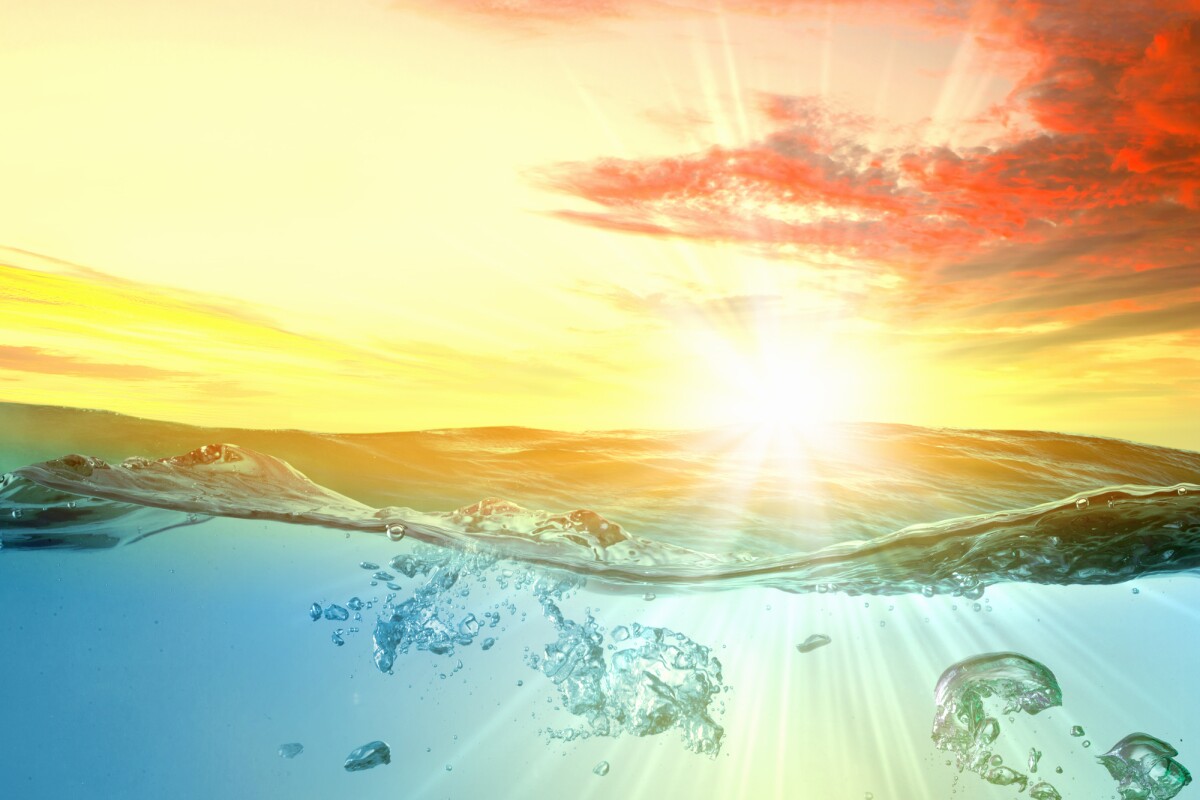
This makes so much sense and fits other obscure observations. not least that thermodynamics may not properly explain all that humid air.
i am also sure this wreaks our theoretical climate models as well. Then again, the ocean is a giant heat sink and sets its own standards in terms of hte atmosphere.
we are back to knowing nothing of course. This means that the atmosphere does not draw water as we expect, but actually depends on mixing. And if the water is warm, we expand the warm air bubble as well to induce tropical depressions that belp block the sun light and to carry off the moisture build up.
Water can evaporate with just light, no heat, says surprising study
October 31, 2023
https://newatlas.com/science/water-evaporate-light-no-heat/
A surprising new study suggests that light alone can evaporate water without heat – and even do so more efficiently
Contrary to what we all learned in elementary school science class, it turns out that heat may not be necessary to make water evaporate. Scientists at MIT have made the surprising discovery that light alone can evaporate water, and is even more efficient at it than heat. The finding could improve our understanding of natural phenomena or boost desalination systems.
Evaporation occurs when water molecules near the surface of the liquid absorb enough energy to escape into the air above as a gas – water vapor. Generally, heat is the energy source, and in the case of Earth’s water cycle, that heat comes primarily from sunlight.
But in the last few years, different teams of scientists have noticed discrepancies in their experiments concerning water held in hydrogels. Water appeared to be evaporating at much higher rates than should be possible based on the amount of heat it was exposed to, sometimes tripling the theoretical maximum rate.
So for the new study, scientists at MIT set out to investigate what might be happening. After a few basic experiments, they suspected that light itself was causing the excess evaporation. The idea is surprising because water doesn’t really absorb light – hence why you can see through it to a decent depth if it’s clean.
[ What wave lenght?? arclein BLUE? ]
To really check their hypothesis, the scientists placed a hydrogel sample in a container on a scale, exposed it to different wavelengths of light in sequence, and measured the amount of mass it lost over time to evaporation. The equipment was carefully controlled and the lights shielded to prevent any heat being introduced to the system and messing with the results.
And sure enough, the water was evaporating at rates much higher than the thermal limit should allow. The degree of evaporation seemed to vary based on the wavelengths of light, peaking at a wavelength of green light. This dependence on color adds evidence that it’s not related to heat.
Water being evaporated out of a hydrogel under green light, which was found to be the peak wavelength
MIT
Next, the researchers repeated the experiment in the dark, using electricity to apply the same amount of heat to the hydrogel as in the light experiment. The rate of water evaporation remained well within the thermal limit, and far below that achieved with light exposure.
The team named the new phenomenon the “photomolecular effect,” and hypothesized that photons of light could potentially “cleave off” clusters of water molecules near the liquid’s surface. While it’s only been observed under carefully controlled lab conditions so far, the researchers say that it could be happening in nature too, such as in clouds or on the surface of the sea, although in those conditions heat is still probably doing most of the work.
The team also suggests that the photomolecular effect could potentially be used to improve the efficiencies of systems like desalination or evaporative cooling. The researchers have already been awarded a grant to study its use in solar-powered desalination, which they estimate could boost efficiency by three or four times. They also have funding to explore whether the effect could be messing up climate models.
The research was published in the journal PNAS.
No comments:
Post a Comment